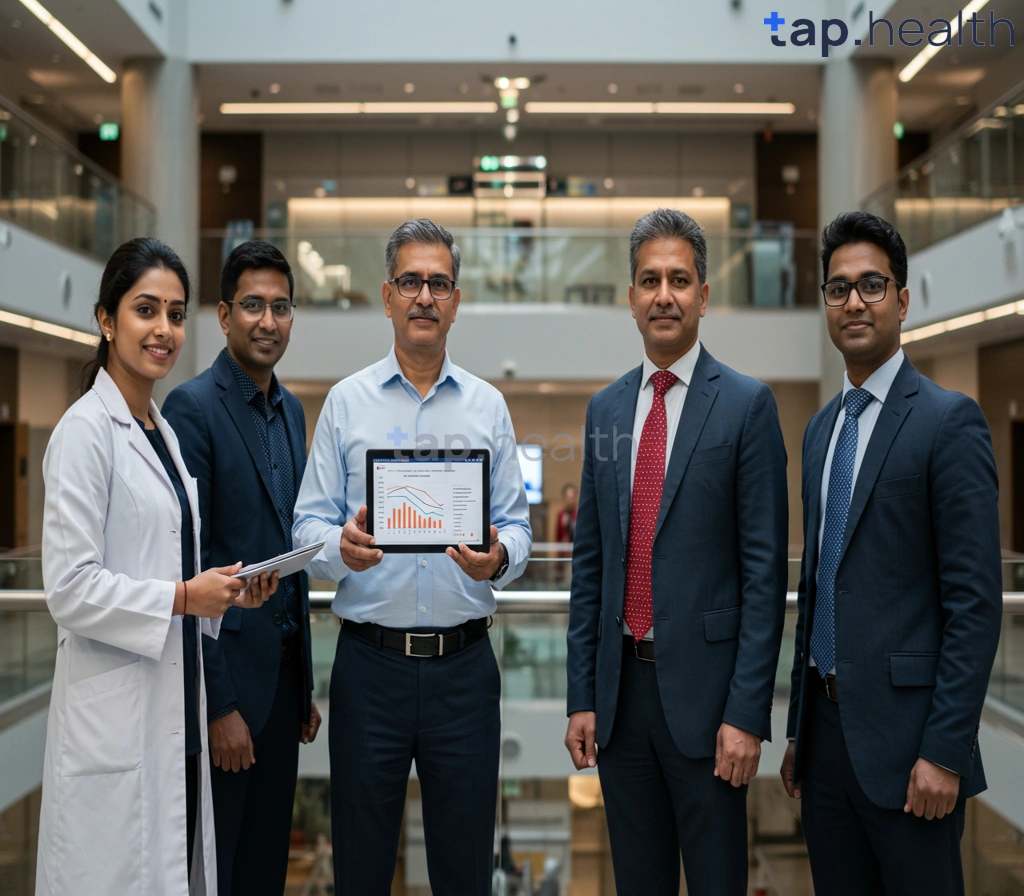Table of Contents
- Understanding Insulin Resistance After Gestational Diabetes
- Key Factors Contributing to Insulin Resistance in Women
- Preventing Insulin Resistance: A Guide for Women with GD History
- Gestational Diabetes & Insulin Resistance: What You Need To Know
- Is Insulin Resistance After Gestational Diabetes Common?
- Frequently Asked Questions
- References
Having gestational diabetes (GDM) during pregnancy can be a worrying experience, but understanding what happens afterward is crucial for your long-term health. Many women wonder about their risk of developing type 2 diabetes later in life, and a key factor to consider is unraveling insulin resistance. This blog post dives into the key factors influencing insulin resistance in women with a history of gestational diabetes, providing insights and practical information to help you make informed choices about your health and well-being. We’ll explore lifestyle modifications and potential long-term implications, empowering you to take proactive steps towards preventing future health complications. Let’s explore the science behind Unraveling Insulin Resistance: Key Factors in Women with Gestational Diabetes History together.
Understanding Insulin Resistance After Gestational Diabetes
Gestational diabetes (GDM) significantly increases the risk of developing type 2 diabetes later in life. A crucial factor underlying both GDM and type 2 diabetes is insulin resistance. Over 80% of individuals with type 2 diabetes exhibit this condition, where their bodies don’t effectively use insulin to regulate blood sugar. Understanding this post-GDM insulin resistance is vital for women in India and other tropical countries, where GDM prevalence is high.
Factors Contributing to Post-GDM Insulin Resistance
Several factors contribute to persistent insulin resistance after pregnancy. Weight gain following delivery is a significant contributor. Many women in India and tropical regions experience cultural pressures and dietary habits that make weight management challenging. Additionally, lifestyle factors such as limited physical activity, unhealthy diets high in processed foods and refined carbohydrates, and chronic stress play a major role. These factors exacerbate insulin resistance, increasing the risk of developing type 2 diabetes. Genetic predisposition also plays a part, making family history a critical consideration.
Managing Insulin Resistance After GDM
For women in India and tropical countries with a history of GDM, proactive management is essential. Adopting a healthy lifestyle is paramount. This includes incorporating regular, moderate-intensity exercise, such as brisk walking or yoga; focusing on a balanced diet rich in fiber, fruits, and vegetables, and low in processed foods and sugary drinks; and effectively managing stress levels through relaxation techniques such as meditation or pranayama. Regular check-ups with a healthcare professional are crucial for monitoring blood sugar levels and making informed lifestyle modifications. Seeking early intervention can significantly reduce the long-term health risks associated with insulin resistance and type 2 diabetes. Learning how to improve insulin sensitivity with diet and exercise is a key part of this process. While this article focuses on the post-partum period, understanding the origins of GDM is also important. For example, it’s worth considering whether gestational diabetes comes from the father, though more research is needed in this area.
Key Factors Contributing to Insulin Resistance in Women
Insulin resistance, a condition where the body’s cells don’t respond effectively to insulin, is a significant concern, particularly for women with a history of gestational diabetes. This is especially pertinent in Indian and tropical countries where lifestyle changes and underlying health conditions may exacerbate the issue. Understanding the key factors is crucial for prevention and management.
Lifestyle and Dietary Influences
Dietary habits play a pivotal role. High consumption of processed foods, sugary drinks, and refined carbohydrates common in many Indian and tropical diets can lead to insulin resistance. A lack of physical activity further compounds the problem. Sedentary lifestyles are increasingly prevalent, contributing to weight gain and metabolic imbalances. Maintaining a healthy weight through a balanced diet rich in fruits, vegetables, and whole grains, combined with regular exercise, is essential. Consider incorporating traditional Indian practices like yoga and mindful eating for better metabolic control. The impact of specific food groups, such as ultra-processed foods, is significant. For a deeper understanding, refer to our article on Effects of Ultra-Processed Foods on Insulin Resistance.
Hormonal Changes and Genetics
Hormonal fluctuations, particularly during pregnancy and perimenopause, can significantly impact insulin sensitivity. Genetic predisposition also plays a role, making some women more susceptible to developing insulin resistance than others. Family history of diabetes is a significant risk factor. Early detection through regular checkups is paramount. Women with a history of gestational diabetes have a heightened risk of developing type 2 diabetes later in life, emphasizing the need for proactive health management. Importantly, research indicates women with diabetes have a 40% higher risk of heart disease compared to men with diabetes, highlighting the serious long-term health consequences. Dietary choices also play a major role; understanding the impact of dairy and alternatives is crucial. You can learn more by reading our piece on Dairy and Alternatives: Understanding Their Impact on Insulin Response.
Underlying Health Conditions
Polycystic ovary syndrome (PCOS) is a common endocrine disorder strongly linked to insulin resistance in women. Other health conditions like obesity, hypertension, and sleep apnea can further contribute. Managing these conditions effectively can improve insulin sensitivity. Seeking medical advice and working with healthcare professionals is crucial in addressing these intertwined factors.
Actionable Steps for Indian and Tropical Regions
Prioritizing regular exercise, adopting a balanced, culturally appropriate diet, and seeking timely medical intervention are crucial steps. Consult a healthcare professional for personalized guidance on managing insulin resistance, especially considering the specific context of your region and lifestyle. Early detection and management are vital for preventing long-term health complications.
Preventing Insulin Resistance: A Guide for Women with GD History
Understanding the Risk
Developing gestational diabetes (GD) significantly increases your risk of developing type 2 diabetes and insulin resistance later in life. In India alone, approximately 2.5 million women experience GD annually, highlighting the widespread need for preventative measures. Postpartum insulin resistance is a significant concern, impacting metabolic health and increasing the risk of long-term health complications. Understanding the factors contributing to insulin resistance is crucial for preventing future health issues.
Lifestyle Modifications for Prevention
Adopting a healthy lifestyle plays a pivotal role in preventing insulin resistance after experiencing GD. This includes maintaining a balanced diet rich in fiber, lean protein, and whole grains, while limiting processed foods, sugary drinks, and unhealthy fats. Regular physical activity, even short bursts of exercise throughout the day, is equally important. Aim for at least 30 minutes of moderate-intensity exercise most days of the week. Prioritize sleep, manage stress effectively, and consider practicing mindfulness techniques to support overall metabolic health. These simple changes can significantly impact your body’s insulin sensitivity. For more information on dietary strategies, you might find our article on Effective Anti-Inflammatory Diet Strategies to Boost Insulin Sensitivity helpful.
Seeking Support and Guidance
Regular check-ups with your doctor or a registered dietitian are crucial. They can help you create a personalized plan for managing your weight, monitoring your blood sugar levels, and addressing any underlying concerns. Connecting with support groups for women with a history of GD can offer invaluable emotional support and practical advice, providing a community that understands your unique challenges. By proactively managing your health, you can significantly reduce your risk of developing insulin resistance and type 2 diabetes. Consulting a qualified healthcare professional in India is vital for personalized guidance based on your individual needs and local resources. Furthermore, maintaining a strong immune system is vital, and you can learn more about this in our article on Boosting Immunity While Managing Diabetes.
Gestational Diabetes & Insulin Resistance: What You Need To Know
Having gestational diabetes (GDM) significantly increases your risk of developing type 2 diabetes later in life. Furthermore, research shows children born to mothers with GDM are 7 times more likely to develop Type 2 diabetes. This underscores the importance of understanding the link between GDM and insulin resistance, especially prevalent in women from Indian and tropical countries. Insulin resistance, a condition where your body’s cells don’t respond effectively to insulin, is a key factor contributing to both GDM and type 2 diabetes.
Understanding Insulin Resistance in the Context of GDM
During pregnancy, hormonal changes can impair insulin function, leading to higher blood sugar levels—characteristic of GDM. This impaired insulin sensitivity can persist even after delivery, increasing your long-term risk of developing type 2 diabetes and related complications such as cardiovascular disease. This risk is heightened in women from South Asian and tropical regions who often face higher rates of metabolic syndrome, a cluster of conditions increasing the likelihood of insulin resistance. Lifestyle factors play a crucial role; maintaining a healthy weight, regular physical activity, and a balanced diet are essential in managing insulin resistance. Before undergoing testing, it’s helpful to understand What to Eat Before a Gestational Diabetes Test? and equally important to know What Not to Eat Before a Gestational Diabetes Test.
Practical Steps for Women with a History of GDM
For women in India and other tropical countries with a history of GDM, proactive steps are crucial. Prioritize regular check-ups with your doctor, including blood glucose monitoring and HbA1c tests. Adopt a diet rich in fiber and whole grains, focusing on locally sourced fruits and vegetables. Regular exercise, such as brisk walking or yoga, can significantly improve insulin sensitivity. Consulting a nutritionist or diabetes educator specialized in managing GDM and its long-term effects can provide personalized guidance, especially considering the unique dietary preferences and cultural practices within your region. Early intervention and proactive lifestyle modifications are key to preventing the development of type 2 diabetes.
Is Insulin Resistance After Gestational Diabetes Common?
Gestational diabetes (GDM), a condition affecting blood sugar levels during pregnancy, significantly increases the risk of developing insulin resistance later in life. While it’s not inevitable, the likelihood is considerably higher for women in India and other tropical countries, often due to a combination of genetic predisposition and lifestyle factors. Many women experience lingering effects of GDM, impacting their metabolic health long after childbirth. This is a critical concern, as insulin resistance is a precursor to type 2 diabetes, a disease with increasing prevalence in these regions. The question of whether you can develop diabetes after pregnancy is closely linked to this, as insulin resistance is a major risk factor.
Understanding Insulin Resistance
Insulin resistance means your body doesn’t use insulin effectively to move glucose from your blood into your cells for energy. This leads to higher blood sugar levels. A normal fasting blood sugar level is between 70–99 mg/dL. Prediabetes is considered to be between 100–125 mg/dL, and 126 mg/dL or higher indicates diabetes. Persistent elevated blood sugar levels, a consequence of insulin resistance, can damage vital organs over time.
Factors Contributing to Post-GDM Insulin Resistance in Tropical Regions
Several factors contribute to the higher incidence of post-GDM insulin resistance in India and similar climates. These include dietary habits, often high in refined carbohydrates and saturated fats; limited physical activity; and genetic susceptibility. Stress and inadequate sleep also play significant roles in disrupting metabolic balance. Furthermore, limited access to regular health check-ups and education on post-GDM management further exacerbates the problem.
Taking Action: Prevention & Management
Regular blood sugar monitoring, adopting a healthy diet rich in fruits, vegetables, and whole grains, and incorporating regular exercise are crucial steps for preventing or managing insulin resistance after GDM. Seek advice from your doctor or a registered dietitian for a personalized plan tailored to your specific needs and risk factors, which are especially important in the context of the high prevalence of metabolic disorders in the region. Early detection and proactive management are key to mitigating long-term health risks. Understanding the implications of insulin resistance is crucial, and while this article focuses on post-GDM, it’s important to remember the severity of conditions like diabetes, where knowing how long a diabetic can survive without insulin highlights the importance of proactive management.
Frequently Asked Questions
Q1. What is insulin resistance, and why is it a concern after gestational diabetes (GDM)?
Insulin resistance is a condition where your body’s cells don’t effectively use insulin to regulate blood sugar. After GDM, insulin resistance significantly increases your risk of developing type 2 diabetes and other health problems. This is particularly important for women in India and tropical countries due to higher GDM prevalence and related lifestyle factors.
Q2. What lifestyle changes can help manage insulin resistance after GDM?
To manage insulin resistance, focus on a healthy lifestyle. This includes regular moderate-intensity exercise (like brisk walking or yoga), a balanced diet rich in fiber, fruits, and vegetables (low in processed foods and sugary drinks), and effective stress management techniques (meditation or pranayama). Regular check-ups with a healthcare professional are crucial for monitoring and adjustments.
Q3. What are the key factors that contribute to insulin resistance in women, especially in India and tropical regions?
Several factors contribute to insulin resistance, including dietary habits high in processed foods and refined carbohydrates, lack of physical activity leading to weight gain, hormonal changes (pregnancy, perimenopause), genetic predisposition, and underlying health conditions like PCOS, obesity, hypertension, and sleep apnea. Cultural factors and access to healthcare also play a role in these regions.
Q4. How can women with a history of GDM prevent or reduce their risk of developing insulin resistance?
Preventing or managing insulin resistance after GDM involves proactive steps. Maintain a healthy weight through balanced nutrition with plenty of fiber, lean protein, and whole grains. Regular physical activity, stress management, adequate sleep, and regular check-ups with a doctor or registered dietitian are vital. Support groups can offer valuable emotional and practical assistance.
Q5. What are the long-term health risks associated with insulin resistance after GDM, and what steps can women take to mitigate these risks?
Uncontrolled insulin resistance significantly increases the risk of developing type 2 diabetes, heart disease, and other serious health complications. Proactive steps include regular blood sugar monitoring, HbA1c tests, a healthy diet, regular exercise, and timely medical intervention. Consulting healthcare professionals and nutritionists for personalized guidance, particularly considering regional dietary practices, is crucial for mitigating long-term health risks.
References
- A Practical Guide to Integrated Type 2 Diabetes Care: https://www.hse.ie/eng/services/list/2/primarycare/east-coast-diabetes-service/management-of-type-2-diabetes/diabetes-and-pregnancy/icgp-guide-to-integrated-type-2.pdf
- Diabetes Mellitus: Understanding the Disease, Its Diagnosis, and Management Strategies in Present Scenario: https://www.ajol.info/index.php/ajbr/article/view/283152/266731





